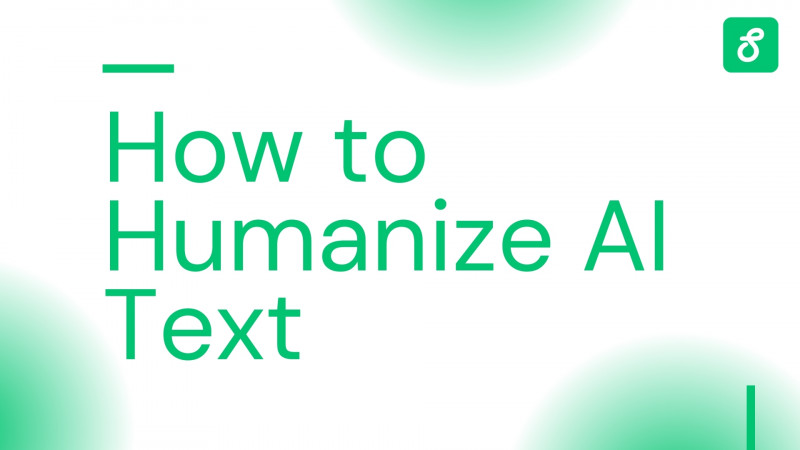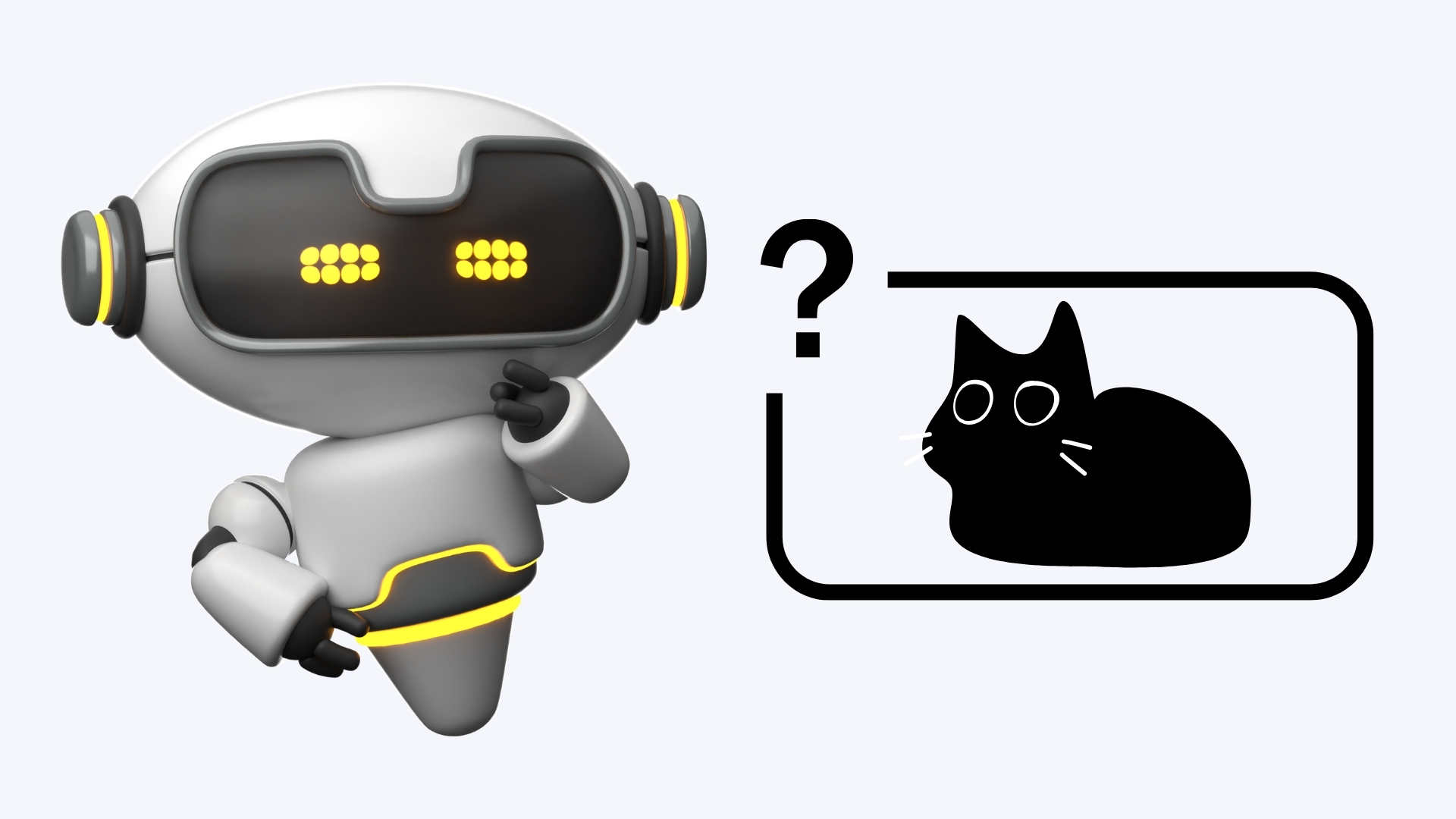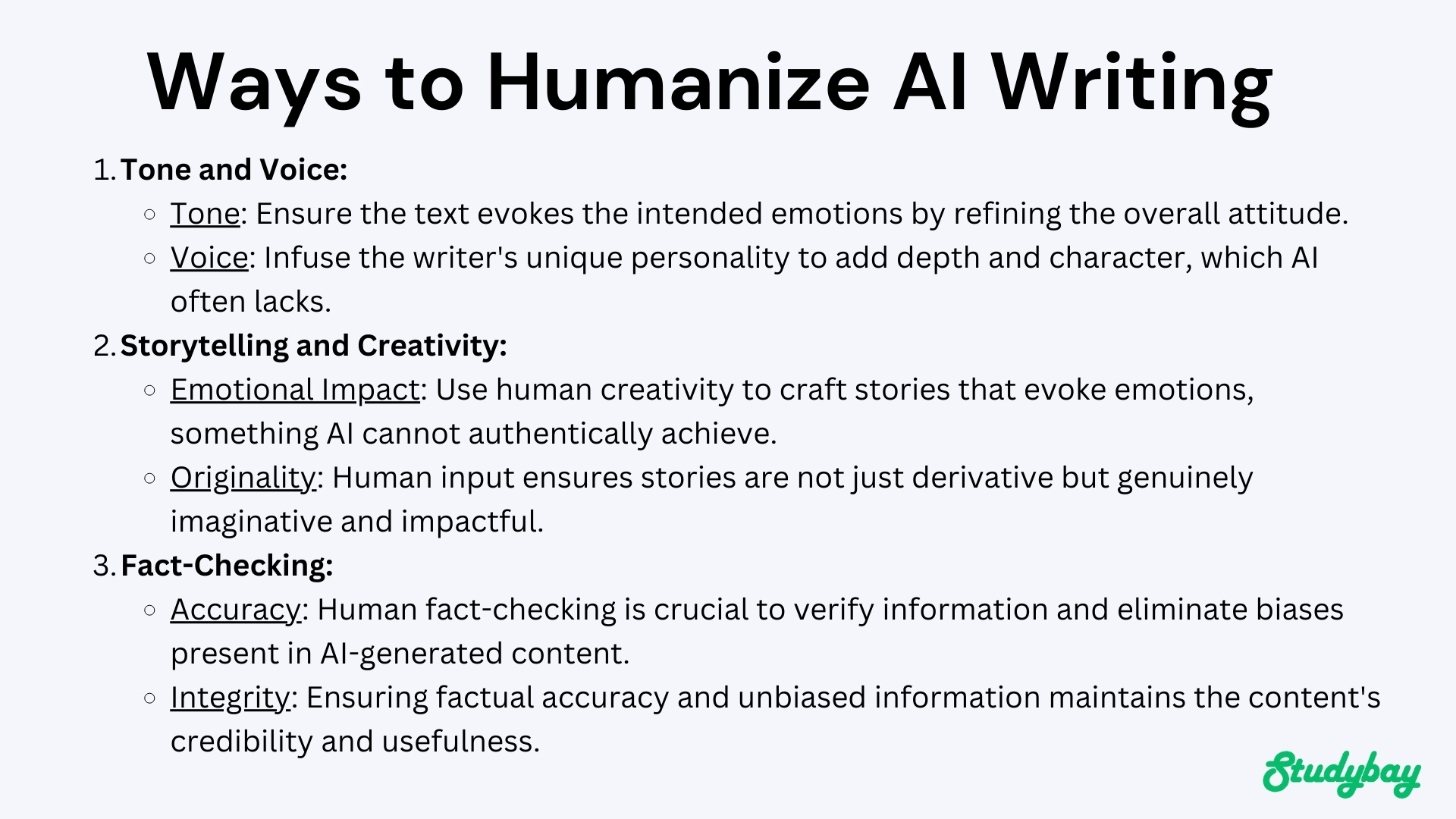
17 min
0
05.24.2024

If you went back a few hundred years and told people that machines would be crafting their letters and tomes from scratch and writing for them, the Spanish Inquisition might have come looking for you! Technology has made our modern lives very easy, and automating tasks is something we’ve accepted without a second thought. When it comes to writing, this is doubly so. From services like Grammarly to the autocorrect and swipe features of your smartphone, there are many examples of AI refining our writing.
However, for all the good that AI writing aids have brought us, problems remain still. Despite being coded by humans, AI writing software cannot mimic the provocative prose and poetry that comes from true experience. It can do its job well enough for writers to feel threatened–and many have lost their jobs to AI already–but it has its limits. It cannot do anything it’s not programmed to do. AI doesn’t sound human because it simply can’t think on its own.
In order for AI-generated texts to sound realistic, they must be humanized. In this article, we will learn how to humanize AI generated text. Read on and find out everything you need to know!
Is it Necessary to Humanize Writing?
Well, here’s the thing. Three kids in a trench coat can pass as an adult, butter can pass as a noodle flavor, but AI-generated text cannot pass for human text. Sure, the AI is trained on human texts, but at the end of the day, the model only works on 0s and 1s. We humans, on the other hand, are passionate, biased, emotional, and more nuanced than an AI could ever be.
So yes, it is absolutely necessary to humanize writing. Allow us to build a case for humanizing AI texts.
- For starters, editing the text to sound more human increases interaction. It helps you connect with your audience on a more personal level.
- Writers can find their own voice and style while writing their material. They can get their points across better. This will help authors stand out from the crowd with a little honesty and a few anecdotes.
- What AI does best is monotonous writing. There is a similar pattern in the writing, and there are overused words that stand out. Professors and teachers who grade papers and essays can spot this difference with ease.
- We’ve discussed AI not being able to interject human emotions and experiences into text. However, AI also has a difficult time interjecting multiple subjects. Bringing in a philosophy reference while writing a sociology paper is not AI’s way of writing.
- Finally, students who write their own or humanify their papers add lessons taught during their school year, indicating personal growth. AI, on the other hand, cannot pull this off.
There you have it; there are more than a few reasons to humanize text. This technique of writing texts is going to help students write better material for years to come.
Are There Risks and Ethics to Consider?
To answer this question, we need to dig into how an AI model fundamentally works. Consider how image identification AI models work. You feed the algorithm images of whatever needs to be identified for reference.
For instance, there were 100 images of cats fed to the model. 30 of these were spotted cats, 30 were orange, and the rest were multi-colored calicos, tortoise shells, and what have you. The model will learn how these cats look and conclude that this is how all cats look. So, when you show it a picture of a black cat, it might not be able to recognize it.

This is the basis of AI model bias, and it applies everywhere, including in texts. AI replicates the bias in the data. Whether biased data was fed by design or accident makes little difference to the model. So, in short, there are risks and ethics to be considered when using AI to generate texts. Further, it is not easy to humanize AI texts when they’re generated this way.
It is important to address the risks and ethical implications of AI training data that contain persistent biases. Artificial intelligence systems frequently mirror the biases of the datasets from which they are trained. Discriminatory results further create ripple effects that will pile into a larger issue in the future.
Keeping AI processes transparent is another big challenge. Since many AI systems function as "black boxes," the reasoning behind their judgments can often remain hidden. Users hesitate to rely on AI-generated content due to the difficulty in understanding its rationale.
Finally, the misuse and manipulation of language generated by AI is a concern. Content on the internet cannot be trusted blindly. We’ve also noticed that AI tends to make up information. This can mislead the paper and exploit opinions.
Techniques for Humanizing AI Text
Ah! It’s time we bring strategy to the table. We know what the problem is, so we will discuss the solution. How can we make AI text more human? Do we use humanizer tools? Will writing better and more specific prompts do the trick? Unfortunately not. We’ll need human intervention, and here’s how.
Tone, Voice, and Audience Connection
Let’s get one key distinction right before we begin. Tone and Voice.
The tone is the overall emotion or attitude of the text. What do you want to convey while writing about the dying forest lands? How do you want the reader to feel about the first-hand experience of climbing a steep mountain? Is it a sense of awe, wonder, and admiration? Absolutely, if that was the intended tone of the article.
Voice, on the other hand, is the unique personality of the writer, the little nuggets of their life they pour into their words. This sneak peek into their personality is what adds character to the writing.
AI has a difficult time getting this right. Although it is capable of producing text that is grammatically sound, it frequently fails to capture subtleties of tone, such as comedy, empathy, or formality. In addition, when producing lengthy texts, it often fails to maintain a consistent tone and voice.
So, how to humanize AI written text? Human editors step in to polish AI-generated writing and ensure it has a consistent tone of voice. A rewriter will review and modify it thoroughly to make sure it fits the intended voice and tone.
Finally, the audience is important. AI can subset people and write specifically for groups of people. However, it is very superficial, with the most relatable aspects of regional differences and slang. On the other hand, human intervention can make it audience-appropriate, providing a deeper level of understanding.
Storytelling and Creativity
Stories don’t come about in a vacuum. A story is considered good because it touches the reader in some way. It inspires awe, brings forth peals of laughter, or even drowns the reader in sorrow. Stories are the result of toil and labor, of people using everything they’ve learned to create art.
AI, while capable of compiling information effectively and creating a story, will often feel incomplete. This is because it is a machine trying to do what it cannot do: imagine. An AI generator can take inspiration from classic works of literature or even new works that are given to it to read. However, it can only ever create a reproduction. It can only mimic. It creates because we ask it to. Not because it feels a need to. That’s the difference.
Artificial intelligence is not a substitute for human intelligence; it is a tool to amplify human creativity and ingenuity.
This is not to say that you can’t use an AI generator, like ChatGPT, to create a mix of tales. But it’ll be derivative, awkward, and lacking humanity. To humanize AI writing, we need a human.
Fact-Checking and Editing
Remember spell check from MS Word? That’s how long we’ve used AI to check our mistakes. Today, we’ve come to check more than just our spelling errors.
However, problems begin when we use it to check facts. Why? Because the AI engine only knows what users give it. The users may have a bias of some kind. They might only input information that proves one thing over another. Or the source of information might be biased. Given how polarized online media is, it’s not a wild guess. How will the AI engine know fact from fiction? It can’t do that. It can only interpret data. Not analyze it.
This leads to inconsistencies. In the worst case, it leads to lies. Fact-checking is something that takes time. The user should always fact-check everything the AI generator produces. Biases are a very real thing. They can make an otherwise good paper completely useless.
How to humanize AI content? Get rid of biases before they get rid of you. It’s the only way to go.

Using AI Content Detectors
If you are checking for AI-generated text, you’re in luck. There are plenty of software packages that will help you do this. These will tell you how to humanize AI text for free:
|
Name |
Description |
Features |
Cost |
|
Writer.com AI Detector |
Finds text that was written by AI to make sure the content is real. |
Instant analysis, easy to integrate |
Usually, it comes with a paid service, with some trials offered. |
|
GPTZero |
Looks for trends and inconsistencies in language to find text that was written by AI. |
User-friendly interface, linguistic analysis |
Offers both free and paid versions. |
|
Copyleaks |
Checks for plagiarism and uses AI to find material. |
Plagiarism check, multilingual support |
Limited free access, with paid plans for longer use. |
|
OpenAI Text Classifier |
Checks to see if the text was created by AI, especially from OpenAI’s models. |
Auto-updates, model-specific AI writing detection |
Free |
|
Turnitin AI Detection |
Used in schools to look for material that was made by AI in student work. |
Huge database, detailed feedback |
Part of a paid subscription. |
Facing Future AI Challenges
Looking ahead, we will face some major challenges if we get too cozy with using AI for content creation. We risk losing our creative spark and critical thinking skills. AI, on the other hand, still struggles with understanding context, subtext, and human emotions.
To convert AI text to human writing, we need a human fixer to tweak and polish it for the right tone, voice, and emotional punch. It’s like seasoning a dish—AI provides the recipe, but humans add the flavor.
And who knows, if we allow AI to take over entirely, students in the future might ask their flying cars to finish their homework on the way to school! This may sound like a sci-fi comedy, but it might also be a horror movie.
This brings us to the ethics of it all. We need to manage ethical issues like data privacy, bias, and misinformation carefully. As AI grows, it’s crucial to set up rules that ensure ethical and wise use and keep humans in the driver’s seat (even if that seat is in a flying car).
So, while AI is a fantastic tool, we shouldn’t let it take the wheel completely. By combining AI’s efficiency with human creativity, we can create content that’s both smart and soulful.
Conclusion
In the end, while AI is a nifty tool, it can’t replace the magic touch of human creativity and insight. So, we come back to square one, how to make AI text more human? Our experts on the Studybay website are here to take on the role and edit and rewrite. It is clear that combining the science and magic of AI and human editors is the key. So, who better than our experienced writers for the job?
However, if you’re feeling particularly brave and want to try something interesting, try Studybay AI or Mystylus AI. The algorithm caters specifically to students. So, a few good prompts will give you amazing results.
Resources
- Chen, S. et al. (2023, November 1). AI generated images are biased, showing the world through stereotypes. Washington Post. https://www.washingtonpost.com/technology/interactive/2023/ai-generated-images-bias-racism-sexism-stereotypes/
- Perry, C. (2024, May 14). Three clever ways to humanize AI content and five mistakes to avoid. Forbes. https://www.forbes.com/sites/forbestechcouncil/2024/05/14/three-clever-ways-to-humanize-ai-content-and-five-mistakes-to-avoid/?sh=46ed905352c7
- Gilson, D. (2024, May 1). Are A.I. text generators thinking like humans — or just very good at convincing us they are? Stanford Graduate School of Business. https://www.gsb.stanford.edu/insights/are-ai-text-generators-thinking-humans-or-just-very-good-convincing-us-they-are
FAQ
What does it mean to make AI text human?
Why is it important to humanize AI text?
What are some practical techniques to change AI text to human text?
What are the challenges in humanizing text?
What ethical considerations should be kept in mind when humanizing AI text?
How to humanize AI writing?




